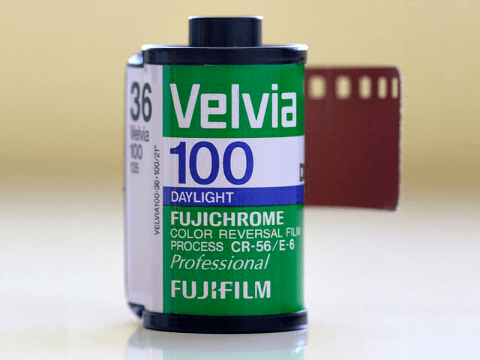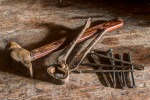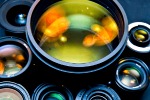What is ISO, and how does it affect photo noise?
What is ISO? In the third article on individual camera exposure settings, we'll talk about this, and how photo noise relates to it.

You may want to rotate your phone in order to improve your browsing experience on this site.
What is ISO?
If you work digital, the third setting your camera controls is ISO.
If you are still analogue, your camera won't change the automatic reading from the loaded film or your override of it.
This is another imprecise term, as ISO by itself is just the short form for International Organisation for Standardisation, which your camera most definitely doesn't control. ISO stands for standardisation and regulation norms in many areas of economy and technology. For example, the different rules assembled under ISO 8859 define 8-bit coded character sets, ISO 9001 describes requirements for quality management systems, and ISO 216 defines paper sizes. (If you are from Europe, A4 stems from this last document.)
What photographers refer to by ISO, is the sensitivity to light of different materials, also called – again – their speed. ISO, the organisation, defined the norms for speed of digital still cameras as ISO 12232, last corrected in October 2006.
The higher the speed of a medium, the more sensitive it is to light. A higher ISO setting thus allows the medium, e.g. film or sensor, to reach the same exposure value with less amount of light. In low-light situations your camera will naturally crank up the ISO in order to reduce exposure time and/or to account for aperture limitations of the attached lens.
With film, everything below ISO 400 was considered "slow", and everything above ISO 800 "high-speed". ISO 400 and 800 counted as "mid-range". The common sequence of digital ISO settings looks like this:
(100), 200, 400, 800, 1600, 3200, 6400, (12800, 25600, ...)
The settings in brackets are available in more advanced cameras. However, even ISO 409600 is not unheard of by now. In terms of exposure, the neighbouring values are set apart by 1 EV, or 1 stop. A camera choosing the sensitivity automatically will settle for any value in between as well.
Sensitivity and noise
Higher light sensitivity comes at a price. Images from high-speed films were immediately recognisable by their coarse grain. Digital images with high ISO values are marked by high levels of photo noise.
The term "noise" was coined in the early days of radio transmissions when electrical variations in received signal caused audible background sounds, or "static". The meaning still remains the same, noise standing for "unwanted signal".
Though the technology has greatly advanced, many camera builds still suffer significantly lower image quality with ISO values over 1000. The reasons for this are understandable.
Noise is always present, for example, as stray, or scattered, light. However, when available light makes the level of useful signal prevail over that of noise, we tend to ignore it. In low-light conditions these levels align. Moreover, higher sensitivity means higher level of amplification, which affects both of these signals. Noise becomes visible.
What can you do about this? Not much other than rely on your camera manufacturer's ability to control noise at high ISO settings. Good news is, these have been improving enormously over the recent years.
When Fujifilm released its X100 camera in early 2011, many reviewers pointed out the compact's effective noise handling beyond ISO 800 up to its advertised highest limit at ISO 6400. (The camera actually makes ISO 12800 available as well, if only when shooting in JPEG format.) The measurements by DxOMark showed, however, that the camera never used any setting beyond just above ISO 1000. When required to use a higher value, it actually underexposed – by up to 2 1/2 stops at ISO 6400 – and used software to "push" the final image. The resulting noise had a completely different origin and a very distinctive, film grain-like look.
Click here to see an example of X100 high ISO management.
This is a fragment at 100% resolution of an uncompressed image taken with aperture priority and ISO 2000. Note that the setting chosen by the camera is exactly 1 stop above the actually used ISO 1000. The file is approximately 200kb big.
One thing, though, is at your disposal. However strange it might sound, use a lens hood. It is meant to reduce the scattered light reaching your lens, and it will do it even in low-light conditions, actually increasing the so-important signal-to-noise ratio.
Tags: #isophotography #cameraexposure #photographylessons
Other articles on camera exposure
- Aperture and depth of field
- Learn what aperture is, and how its different settings can change the look of your images.
- Shutter speed and motion blur
- Learn how exposure time can add dynamic and movement to your images.
- ISO and digital noise
- Learn how photo noise is related to your chosen ISO value.
- Metering modes
- Understand different metering modes and when to use them.
- Exposure compensation and bracketing
- Learn how to overcome shortcomings of your camera's automatic exposure metering.
- The sunny 16 rule and manual exposure
- Measure up to your camera and take exposure in your own hands with this simple and easy to follow rule.
Exercises
Ready to test what you have learned? Take a round of exercises about camera exposure elements!
Tell me what you think!
Is it useful 👍? Awful 👎? Leave a message! Your comments help make this site better (and give me a kick—one way or another).
Popular articles
-
A kind of magic
If a digital picture has to be seen in the real world, printed on a real medium and displayed in a real showcase, its transition from RAW to real is better done in an old school image editor. Enter A…
-
A duck for a dog
If you got your own place on the Internet, helping your visitors find what they are looking for is a great way to engage them and keep them staying a bit longer. A custom site search can achieve just …
-
"Might as well have the best"
Aiming for better images? Think better lenses! This is your most important piece of gear, so you better get it sorted out. — Need some advice?
 Become a patron for
Become a patron for